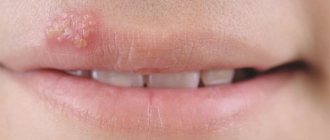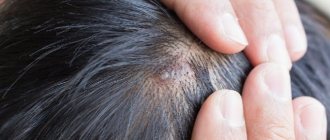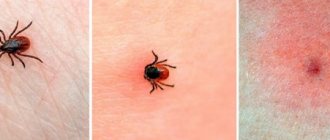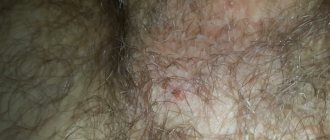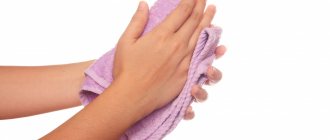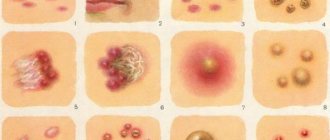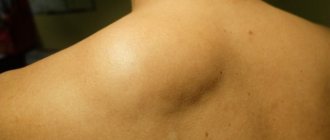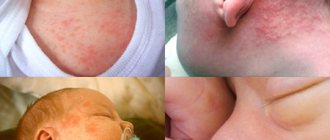Clean scabies is a type of scabies mite infestation in which the patient pays special attention to his cleanliness, and the symptoms of the disease manifest themselves somewhat differently. To prevent the development and reproduction of the tick, you need to know how the disease manifests itself and for what reasons, then consult a doctor and take all treatment measures. You should cure yourself and insist that people around you - family, friends and colleagues - take preventive measures, because they may also be infected.
Features of the pathology
Scabies of “clean people” in most cases has a typical form of development. In this case, the disease is accompanied by the appearance of specific symptoms, and therefore diagnosing the disease is not difficult for the doctor. In the atypical form, the symptoms of the pathology are erased; a comprehensive examination is required to identify the pathology.
One of the features of the manifestation of scabies in “clean people” is that the affected area of the skin is in most cases small. Often the disease occurs in a latent form. In such cases, only with a pronounced weakening of the body’s defenses do the first signs of scabies appear for “clean people”. Only a doctor should tell you how to treat a pathology, since self-prescription of medications leads to negative consequences that are much more difficult to eliminate than the disease itself. The difficulty lies in the fact that the latent form of the disease does not lead to the formation of extensive and deep scratches, and therefore most people do not turn to a specialist in a timely manner. As a rule, the disease is diagnosed randomly during medical examinations.
Most often, “incognito” is diagnosed in people who are responsible for observing hygiene rules, but whose immune system is significantly weakened. In addition, pathology is often detected in people with other dermatological diseases.
The duration of the period of primary infection ranges from 2 to 14 days, while the latent form of scabies of “clean people” can last for several months with frequent changes of bed and underwear and constant washing off of the itching with water and the use of cosmetics.
By influencing the subcutaneous parasite with soap, gels, and a washcloth, a person removes some of the pathogens from the body. At the same time, the remaining mites involuntarily penetrate even deeper and hide under the stratum corneum in the formed scabies canals. In this regard, the pathological process transforms into a form in which periods of remission (a temporary state of improvement) are replaced by relapses.
How to treat itching
The first stage of treatment is to identify the cause of the itching. If the itching is not associated with diseases, then it can be eliminated by replacing cosmetics, shaving accessories and clothing.
It is also important to follow the rules of hygiene and shower frequently.
In cases where the itching is caused by diseases, you will find redness, inflammation and peeling. In this case, treatment should be taken more seriously and you should consult a doctor.
If you have a fungal disease, it will be enough to use antifungal ointments. In case of furunculosis, problem areas should be treated with antiseptics, such as brilliant green.
To treat dermatitis, you will be prescribed antihistamines.
You can resort to traditional medicine methods. If you experience excessive sweating, your armpits should be moisturized with chamomile infusion. Two tablespoons of chamomile are poured into 300 ml of boiling water and left for 20 minutes, after which they are applied to the problem area.
St. John's wort decoction is no less effective. It is done in the same way.
In addition, your armpits can be lubricated with regular vegetable oil applied to a cotton pad.
If the itching needs to be relieved urgently, you can use the following ointments:
Applying these ointments will relieve the itching, but remember that in the future you will need to find and eliminate the reason why your armpits itch.
Irritation of the skin under the arms is a common manifestation that brings discomfort and is accompanied by severe itching, burning and pain. It is necessary to get rid of this problem as quickly as possible, but first it is important to find the cause of this phenomenon.
Causes
Scabies of “clean people” (a photo of the external manifestation of the disease is presented below) can occur in the following cases:
- When the doctor initially made an incorrect diagnosis and drew up an incorrect treatment regimen, including the external use of hormonal ointments and creams. Against the background of their use, the clinical picture is distorted. The patient feels improvements (decreased severity of itching and external signs), but the pathology continues to progress.
- After long-term use of antibacterial agents. During treatment with such medications, the body's defenses are significantly weakened and the subcutaneous mite can become active. A malfunction of the immune system can also occur due to prolonged exposure to stress.
- Frequent hygiene measures using soap. Excessive use of water procedures harms the skin just as much as their complete absence. With frequent washing, the natural protective barrier is broken, due to which the body's resistance to subcutaneous itching and other pathogens is reduced. Soap is another enemy of the skin. An alkaline environment also has a negative effect on the protective barrier. In this regard, it is necessary to use only products with a pH value less than 7.
At risk are people who, due to the nature of their professional activities, are forced to wash frequently: athletes, car mechanics, tractor drivers, miners, etc. Often, “clean” scabies (a photo of the first skin manifestations of the disease is presented below) is diagnosed in children who are bathed very often. In such cases, parents most often attribute the presence of limited scratching to an allergic reaction.
If you regularly wash with a washcloth, a large amount of subcutaneous itching and pathogen larvae are removed from the skin along with water. This stops the further development of the disease and the formation of new tick burrows. That is why an infected person may not pay attention to changes in the skin for a long time, attributing them to irritation, allergies or mosquito bites. In such cases, the person still remains the source of the disease.
Main routes of infection:
- Body contact, including a banal handshake.
- Wearing someone else's clothes.
- While caring for an infected person.
- When reading other people's books.
- Shared towels and bed linen.
- During children's fun with other people's toys.
Activation of subcutaneous itching occurs at night. In this regard, the transmission of ticks from parents to children occurs during joint sleep.
Manifestation of external factors
One of the most common causes of itching in the armpits is a disease called hyperhidrosis. It is characterized by increased activity of the sweat glands, as a result of which a person sweats heavily. This may be a feature of the body or a sign of some disorder in the body.
Hyperhidrosis is mainly observed in men, as they have wider sweat ducts. Sweating worsens in the summer or during intense sports activities. It can also be provoked by the consumption of hot drinks, alcohol, hot and spicy foods.
In women, increased sweating may occur during certain periods. This is due to changes in hormonal levels. Hyperhidrosis can be provoked by processes such as pregnancy, menopause, and the onset of puberty.
Needless to say, neglecting the rules of personal hygiene causes irritation and itching in the armpits. Due to pollution, a large number of bacteria accumulate in the folds of the skin. The secretion of sweat promotes their reproduction, as microorganisms are activated in a humid environment. As a result, a rash occurs, prickly heat, and the armpits begin to itch.
Many women love to wear tight clothing made from synthetic materials. Artificial fibers do not allow air to pass through and do not allow the skin to breathe. As a result, irritation and itching occurs under the arms.
A burning sensation in the armpits can be caused by the use of cosmetics. Antiperspirants and deodorants, applied in large quantities, clog the sebaceous ducts, as a result of which fat plugs form in them. This leads to skin rashes that cause itching. It can also be caused by an allergic reaction to any component of the drug.
Very often, procedures such as shaving and depilation are the cause of redness and burning under the arms. The skin in this area reacts painfully to any mechanical irritation. Therefore, the manifestation of irritation after these procedures is a normal reaction of the body. As a rule, these symptoms disappear within a day or two after surgery.
Symptoms
How to treat scabies for “clean people” is decided solely by the doctor. If the first signs of pathology occur, you must contact a specialist as soon as possible and not take emergency measures without his permission.
Symptoms of scabies for “clean people” include the following conditions:
- Slight itching of the skin, which bothers you at night. At this time, female zudnya are as active as possible. The pathogen larvae and eggs laid in tick ducts constantly need oxygen. In order to obtain it, they secrete a toxic compound that causes itching. A person scratches and peels the skin, resulting in oxygen being supplied to pathogens.
- The presence of subtle single moves. These are stripes under the skin that look like small scratches. Scabies can be up to 2 cm long. Their color varies from slightly whitish to gray. The passages can be winding or straight. The canals are gnawed by females of the subcutaneous itch. They are not always detected during external examination, but if they are found, this is a clear sign of the presence of scabies for “clean people.”
- Inflammation in the area of small single scratches. In this case, the damage to the skin is mild.
Frequent hand washing may cause damage to the palms. In some cases, the skin between the fingers becomes red and itchy.
External signs of scabies for “clean people” are varied. They may be similar to symptoms of urticaria or dermatitis. Pustules, papules, and vesicles may form on the skin. Crusts or cracks can be found in the area of tick canals.
Despite the fact that in people the symptoms of “clean” scabies are mild, their intensity increases over time. Gradually, larger and larger areas of the skin begin to become involved in the pathological process.
The most typical areas of localization of the disease are:
- Wrists.
- Elbows.
- Popliteal cavities.
- External and internal parts of the feet.
- Armpits.
- Inner thigh.
- The area around the nipples (in both men and women).
- The area between the shoulder blades.
- Areas around the navel.
- The area between the fingers.
- Ribs of the palms.
- Buttocks.
- Genital organs.
- Anal opening.
In most cases, the hands are affected. This is the first sign of scabies for “clean people”, which occurs in a typical form. If the disease is hidden, this symptom may appear later. This happens if the infection occurs through sexual contact and subcutaneous itching takes longer to reach the fingers.
The danger of a latent form of pathology is that the correct diagnosis is rarely made in the first months of the disease’s development. This is precisely what happens because the itching slowly reaches the fingers. At the same time, scratches present on other parts of the body are in most cases mistaken for insect bites or manifestations of an allergic reaction. As a rule, the true cause of itching is revealed only when the vast majority of the body is affected by the mite.
Where do scabies mites most often settle?
You can become infected with scabies at any age, social status, and even level of cleanliness. The pathology is accompanied by itching, and scabies appear on the surface of the body. The most common locations of scabies rashes depend on various factors, including the type of disease.
Basic information about the disease
Scabies is a highly contagious parasitic dermatological infection. The disease is easily transmitted from a sick person to healthy people, so epidemic outbreaks often occur in closed groups.
In the vast majority of cases, infection occurs through direct contact of the skin of infected and healthy people. It is unlikely, but transmission of infection through common household items, clothing, toys, and during sexual intercourse cannot be ruled out.
The causative agent of the disease is scabies. The female mite makes passages under the surface of the skin, where it lays eggs. The role of the male in the development of the disease is insignificant; he dies after mating.
Sex differences in itching
The bloodsucker has a size of no more than 0.5 mm, so it can only be examined under a microscope, or in photographs in medical encyclopedias.
To the naked eye, the parasite looks like a tiny black dot in the subcutaneous passage, which only the most eagle-eyed people can see.
Didn't understand the article or need help?
Ask a question now and get an answer. The lifespan of a female is up to 2 months . Every day she lays up to 5 new eggs .
Itching, rashes, and other manifestations arise as a response of the body to toxins and waste products (eggs remaining after the molting of larvae, skins, egg shells, excrement) of parasites. The duration of the incubation period and the intensity of manifestation of the main signs of the disease depend on the age and efficiency of the immune system.
The scabies mite is dangerous at any stage of development, and since the symptoms of the pathology appear only 1–2 weeks after infection, the disease spreads rapidly.
Types of rash
Most patients and dermatologists are faced with ordinary scabies, which has typical manifestations. They are quite bright and obvious, which makes it possible to diagnose pathology even without laboratory diagnostics - based on examination.
There are also atypical forms of the disease. They differ in the type and location of the rash, the presence or absence of the usual symptoms. For example, itching and even scabies may be absent.
An unusual course is most often observed in children, the elderly, and in persons with tuberculosis, malignant tumors, and other immunodeficiency conditions.
If you suspect scabies, you should immediately make an appointment with a dermatologist.
Typical development of the disease
Common scabies has two main symptoms:
- the desire to itch occurs in the evening and subsides in the morning;
- In damaged areas, the subcutaneous passages of ticks can be identified.
The rashes look like small papules, which gradually transform into blisters covered with bloody or purulent scabs.
Locations of the rash:
- in the folds between the fingers;
- on the sides of the body, fingers;
- in the elbow and knee bends;
- around the nipples;
- around the navel, on the lower abdomen;
- in the intimate area, on the buttocks, upper thighs.
With proper and timely treatment, the itching associated with typical scabies gradually subsides and completely disappears within 5–7 days . After 2 weeks , the doctor prescribes repeat tests to confirm the fact of complete cure.
Scabies burrows occur in places where the female mite moves through the tissues of the epidermis. The parasite gnaws through the skin and loosens the stratum corneum.
The length of the passages does not exceed 1 cm. From the outside they look like grayish, pink or white lines. At the end of each of them there is a sac containing up to 25 eggs.
Incognito form
Low-symptomatic scabies occurs in people who abuse water hygiene procedures during the day and do not have problems with the immune system. Detergents not only remove dust, dirt, and parasites from the skin, but also contribute to the thinning of the epidermis.
The main manifestations are severe itching in the evening and at night, a small amount of rash in the interdigital area.
Pseudoscabies occurs in humans when dogs and other animals are infected with mites. At the same time, parasites cannot live in the tissues of the human epidermis.
The rash appears within a few hours, but is observed exclusively in areas of contact with animals. There is no need for treatment, the discomfort disappears after a few days.
Scabies without moves
A rash, itching, against the background of the absence of traces of the progress of parasites, are signs of penetration of scabies onto the skin not by an adult individual, but by its larvae.
At the initial stage, a few papules appear in the wrist area, on the abdomen, and lower extremities. As the disease progresses, the symptoms become more pronounced and the typical form of the disease develops.
Itching and rash are possible with a variety of dermatological problems, so you should not self-medicate. Lack of adequate therapy is the main cause of complications.
Norwegian uniform
Norwegian scabies is most often diagnosed in older people and people with weakened immune systems. This is the most severe type of pathology, which does not respond well to drug therapy and is often accompanied by severe complications.
The disease is very contagious, since up to 1 million parasites , although in the typical form there are no more than several dozen of them on the body. With this form of pathology, the skin does not always itch.
Reasons for the absence of itching with Norwegian scabies:
- Severe immunodeficiency pathologies, when the body reacts to the presence of skin parasites in an atypical manner. The disease develops in severely malnourished people suffering from AIDS and tuberculosis, with long-term treatment with cytostatics and hormonal drugs.
- Skin sensitivity disorders - a problem occurs with leprosy, polyneuropathy, and pathologies of the spinal cord.
- In the presence of paralysis and myopathy, people cannot itch due to limited mobility, which can be mistaken for the absence of itching.
- The inability to feel itching is rarely hereditary.
With Norwegian scabies there is no rash as such. The epidermis rapidly thickens and becomes coarser, and dirty yellow or dark brown crusts form.
The skin suffers throughout the body, often pathological processes affect the face. Under the scabs there are winding scabies passages. If the crusts fall off, or a person accidentally tears them off, bleeding erosions and ulcers form that do not heal for a long time. Microbes penetrate into open wounds, which only aggravates the already severe course of the disease.
Norwegian scabies is characterized by deterioration of the condition of nails and hair, and the body emits an unpleasant sour odor.
Scabious lymphoplasia
Nodular or nodular scabies is characterized by the appearance of a few dense nodules, which consist of overgrown lymphoid tissue. They arise as a result of an overly powerful reaction of the body's defenses to the presence of mites and, especially, their waste.
The rashes are round and pink, pale brown, or deep red. Scabies are located on the surface. The size of the rashes is on average 2–20 mm .
Itching is practically absent, so often a rash is the only manifestation of a parasitic pathology. Nodules may appear on the skin for several weeks or months after treatment. This is due to the presence of unfertilized females in the skin, which are a strong allergen.
Where does the rash appear:
- groin area, scrotum, penis;
- buttocks, thighs;
- armpits;
- around the nipples and anus.
Scabies manifestations in children
In infants under six months of age, the manifestations of scabies are in many ways similar to urticaria. Groups of blisters form on the skin, suggesting contact with nettles. Often, when infants are infected with scabies, their nails become loose and quickly break off.
In an older child, parasitic pathology may resemble weeping eczema. In this case, the usual treatment regimens may not work.
The main difference between scabies in children is the atypical location of the rash. It can appear on the face, on the head (especially along the hairline), on the palms, feet, and so on.
Preparations with low concentrations of active substances are intended for young patients. In adults, these same drugs will only weaken the ticks, but will not destroy them. As a result, the pathology will become advanced.
In 50% of adults and almost all children, scabies is accompanied by various complications, in particular dermatitis and pyoderma. In infants, this is one of the possible causes of sepsis.
Scabies without rash
Can you have scabies without a skin rash? Severe itching in the absence of a rash is a sign of an allergy. It can appear in people with excessively dry skin, or with insufficient hygiene standards.
However, in some cases, a similar picture accompanies infection with scabies:
- Scabies without passages and the “incognito” form - the rashes are so few in number that a person simply does not notice them.
- Strong immunity and no predisposition to allergic reactions. The body reacts to the presence of scabies mites under the skin with only minor itching. In such cases, scabies often takes on a chronic form, since people do not immediately turn to a specialist.
- Penetration of animal ticks onto the skin.
- Nervous scabies is a non-parasitic type of the disease. Occurs against the background of increased psycho-emotional stress.
The human body does not know how to develop immunity to itching. For this reason, you can get scabies more than once throughout your life. The main condition is the presence of a source of infection. Moreover, re-infection is often more acute, and symptoms appear much earlier.
Scabies is most often diagnosed in people under 30 years of age . 20% of all patients are children of different age categories.
Forms (complications) of scabies:
An infected person poses a threat to others, even if there is no rash or other signs of the disease. For this reason, dermatologists recommend isolating scabies patients. For this purpose, there are separate boxes in skin and venereal disease clinics.
It is possible to defeat parasites!
Antiparasitic Complex® – Reliable and safe removal of parasites in 21 days!
- The composition includes only natural ingredients;
- Does not cause side effects;
- Absolutely safe;
- Protects the liver, heart, lungs, stomach, skin from parasites;
- Removes waste products of parasites from the body.
- Effectively destroys most types of helminths in 21 days.
There is currently a promotion for free packaging. Read expert opinion.
Source: https://otparazitoff.ru/chesotka/naibolee-chastye-mesta-lokalizacii-sypi.html
Diagnostics
When the first symptoms of “clean” scabies occur, you should consult a dermatologist. During the appointment, the specialist will conduct a primary diagnosis, including:
- Patient interview. The doctor needs to provide information regarding what symptoms are currently bothering you and how long ago they appeared. Important signs are itching that increases at night and the presence of skin rashes. In addition, it is important for the specialist to know whether similar manifestations occur in people living with the patient or working/communicating with him in a close team.
- Examination of the patient. The doctor assesses the condition of a person’s skin and identifies the location of scratching. In some cases, a specialist can visualize tick burrows in the affected areas.
If you suspect the presence of a latent form of scabies in “clean” children, for whom careful and regular care is organized, you need to consider:
- Scratching areas that are not typical for adults. In children, the most common areas affected by subcutaneous mites are: the head (face and scalp), neck, feet, nails, and back.
- Very rapid destruction of pathogen passages when scratching itchy areas.
- The presence of other rashes that have arisen against the background of allergies, diathesis, eczema. It is important to consider that they mask the skin signs of scabies for “clean” people.
Treatment in children should be carried out immediately. In the absence of timely intervention by a qualified specialist, the pathology will rapidly develop, against the background of which the child’s general condition will worsen and the risk of negative consequences will increase.
When examining older children (school age), the doctor may additionally detect: ulcers at the site of the rash, covered with crusts of dried blood or pus; tick burrows in the form of elevations above the skin; red blisters on elbows.
To make an accurate diagnosis, laboratory research methods are mandatory. These include:
- Coloring. Its essence is as follows: suspicious areas of the skin are treated with iodine, mascara or methylene blue. These substances are capable of brighter coloring of loosened and inflamed tissue, thanks to which a specialist will be able to clearly visualize tick canals.
- Thin section method. A small piece of skin is removed from the patient. The method is painless and is not accompanied by changes in the patient’s appearance. The resulting biological material is examined under a microscope. During the examination, you can find subcutaneous itching, larvae, eggs and their shells, skins, which are the end product of molting.
- Scraping Lactic acid is applied to any suspicious area. It helps soften the stratum corneum and does not irritate the skin. After 5 minutes, scraping is carried out. Experts examine the resulting skin particles at a magnification of 600 times.
In addition, in some cases it is possible to remove the female itch from the tick canal using a special medical needle.
Dermatitis under the arms
Another unpleasant reason for the appearance of spots and redness, which can not only itch, but also hurt, is skin damage to dermatitis. Sometimes the disease is internal in nature, and its manifestations are not too noticeable. The localization of the disease directly in the armpit area is explained by its increased sensitivity.
Speaking about the causes of dermatitis, it is important to highlight the following:
- Improper hygiene of your own body. On sweating skin, pathogenic microbes rapidly develop, which is facilitated by the so-called steaming of the skin.
- Synthetic clothing. Dermatitis itching appears due to frequent wearing of artificial fibers, which do not allow the skin to breathe, thus creating allergic reactions.
- The use of low-quality cosmetics, which ultimately leads to the development of urticaria into dermatitis.
- Presence of internal diseases.
Skin dermatitis in the area under the arms is a consequence of frequent skin irritation, which becomes too severe.
Treatment of a disease of this type should be carried out under the condition that the original source is completely eliminated, otherwise the therapy will not make sense.
The main signs of dermatitis manifestations:
- The rash is bright red in color, accompanied by a burning sensation and severe itching, developing into pain due to the formation of cracks.
- The skin in areas of inflammation peels off and can be removed as a thin film over time.
- If dermatitis is advanced, blisters filled with liquid may appear.
- The presence of wet erosions is another sign of advanced skin lesions not caused by a fungus.
- If the disease has acquired a chronic form, then its signs are considered to be cracks in the area of the depressions. At the same time, they do not cause any discomfort, but may be accompanied by keratinized areas.
Conservative methods of therapy
Regardless of the severity of the symptoms of “clean” scabies, treatment of the disease should begin as soon as possible. The outcome of the disease directly depends on the timeliness of the measures taken.
A dermatologist provides information on how to treat scabies for “clean people.” The specialist develops a treatment plan, the objectives of which are:
- elimination of mature individuals of the pathogen, their larvae and eggs;
- preventing re-infection and spread of the epidemic.
General rules for the treatment of scabies for “clean people”:
- All activities are carried out before bedtime, which is due to the high activity of the parasite at night.
- When the disease is detected in children under 5 years of age, anti-scabies drugs are applied completely to the entire body (including the face and scalp).
- At the same time, treatment is carried out for people who have close and regular contact with the patient.
- All medications must be rubbed in with bare palms for about 5 minutes. This is due to the fact that the latter contain the largest number of tick canals.
- Regardless of the name of the drug, therapeutic treatment is carried out on days 1 and 4. This is explained by the fact that 4 days after the onset of the disease, new itches hatch from eggs that were not affected by the medication.
- Hygienic procedures are carried out before treating the skin and after 12 hours from the moment of application of the drug.
- Bed and underwear should be changed every 6 to 12 hours.
- If complications occur, their management is carried out simultaneously with the main therapy.
Regardless of the severity of the symptoms of “clean” scabies, treatment of the disease includes the external use of anti-scabies. As a rule, doctors prescribe the following drugs:
- "Benzyl benzoate". Sold in the form of ointment and emulsion. The first treatment is carried out at night. The product should not be washed off the skin for about 12 hours. After this, the linen is changed and the patient is allowed to take a shower. The second treatment occurs on day 4.
- "Sulfuric ointment". Approved for use in children from 2 months. The skin must be treated every evening for 1 week.
- "Spregal". A French remedy that needs to be sprayed over the entire surface of the body.
- "Permethrin." Apply at night for 3 days. Not used in children under 1 year of age.
- "Lyndon." The lotion is applied with a tampon at night on days 1 and 4 of treatment.
For scabies, medications should be prescribed by a doctor, taking into account the individual health characteristics of the patient and the course of the pathology.
After treatment, allergic itching may occur. This condition is not a reason for a repeat course of therapy. Long-term use of external agents can lead to the development of severe dermatitis.
Scabies: symptoms, photos, first signs in adults and children
Scabies is a parasitic skin disease. Symptoms of scabies cause a person a lot of problems; moreover, the very awareness of the fact that microscopic parasites have settled under the skin becomes a reason for psychological discomfort. Therefore, it is very important to know how scabies is transmitted and how to avoid infection with mites. Symptoms and treatment of the disease are described in this article.
What it is?
Scabies is a skin disease caused by a microscopic parasitic mite .
The term “scabies” comes from the verb “to itch,” which is explained by the leading symptom of the disease - severe itching that annoys the patient.
Scabies: photo of a mite under the skin
Interestingly, the first descriptions of scabies were made by ancient Greek healers. Researchers classified the disease as a skin pathology, calling it “ psora .”
True, the causative agent of scabies could not be isolated in Ancient Greece due to its microscopic size. The first assumptions about the parasitic nature of the disease were put forward in the Middle Ages.
This hypothesis was confirmed at the end of the 17th century, when the microscope was invented.
Scabies is a social disease. In particular, significant growth is recorded in times of war and natural disasters, when people have to group in limited areas to save their lives. In such difficult times, up to a third of the population can become infected with ticks.
The number of cases also increases significantly during the cold season. This is explained by the characteristics of the causative agent of scabies, whose peak fertility is observed in winter and autumn. In addition, with the onset of cold weather, people sweat more, and sweat creates excellent conditions for ticks to reproduce.
ICD-10
In the International Classification of Diseases (the system used by doctors to code diseases), scabies is assigned the code B86 .
Causes
Infection with scabies occurs at the time of contact with a sick person or in the case of using objects that have mites on them.
An adult individual outside the host’s body remains viable for 36 hours: this time is quite enough to find a new host. Having penetrated the epidermal layer of the skin, the mite moves into them, resulting in the formation of subcutaneous passages.
Symptoms and first signs
First signs: photos
The disease has no incubation period: immediately after entering the human body, the female begins to make passages under the skin and lay eggs.
If it is not an adult tick that has entered the body, but larvae, the incubation period can be about 5 weeks: this is exactly how long it takes for the larva to turn into a mature individual.
The symptoms of the disease are determined by two factors: the direct activity of the tick and the body’s reaction to the products of its vital activity.
Scabies on hands: photo
The main symptoms indicating the presence of the disease include:
- severe itching. Itching tends to intensify at night, which is associated with an increase in mite activity in the dark;
- characteristic scratches on the skin, which the patient leaves on himself, trying to cope with the unbearable itching;
- due to sleep disturbances, the patient experiences neuropsychic exhaustion;
- Scabies and a rash appear on the skin of an infected person. The moves look like straight or broken lines with a white or gray tint;
- in some cases, small bubbles with transparent contents appear. Most often, rashes can be seen between the fingers, on the wrists, on the feet, on the stomach and on the buttocks.
In clinical practice, differential signs indicating that a patient has scabies rather than another skin disease include:
- Ardi's symptom : rash in the elbow area;
- Gorchakov's symptom : the appearance of crusts in the elbow area;
- Michaelis symptom : the appearance of a rash in the intergluteal area. In this case, a rash may also appear on the sacrum;
- Sezari's sign : rash between the fingers.
A characteristic feature of scabies in children is that the rash is localized mainly on the scalp, as well as on the feet and palms. Scabies can be detected by the characteristic blisters that form at the bite sites.
If a child has a high sensitivity threshold, he may not complain of itching. In this case, the disease can proceed completely unnoticed. However, the passages will still be visible on the skin, which helps make the correct diagnosis.
Scabies can also appear in an infant . Detecting the disease in this case is problematic, since infants are prone to various types of rashes.
How does scabies manifest itself in children? Mite infestation is indicated by:
- restlessness that worsens at night;
- skin rashes that are localized on the face and hands;
- the child’s nails change structure, becoming thicker;
- the child tries to scratch himself, and therefore damages his skin.
In adults
The clinical picture of scabies in adults may be atypical. For example, if the patient resorts to water procedures too often, most of the mites can be removed from the skin mechanically.
In this case, the manifestations of the disease will be minimal.
Only with careful examination can one detect isolated passages and rashes that will be absent in places of characteristic localization (on the hands between the fingers).
With a weakened immune system, for example, while taking certain medications or with scabies, in which up to two hundred mites can be present on one square centimeter of skin, the patient’s skin becomes covered with massive rashes (crusts, vesicles, etc.), and hair may fall out. Patients have an unpleasant smell of yeast and often have a fever. This form of the disease is called “Norwegian scabies” .
Treatment
The mainstay of treatment for scabies is eradication of the mite. For this purpose, special medicines that have an acaricidal effect are used.
The general principles of treatment for scabies are as follows:
- treatment of all patients who were identified in one outbreak (work collective, barracks, kindergarten) should be carried out simultaneously;
- all people who have had contact with the patient or live in the same area with him should be treated;
- any medications should be applied before bedtime, which is due to the characteristics of the life activity of the causative agent of the disease;
- During the treatment period, it is recommended to wash as often as possible, but in any case the drug should remain on the skin for at least 12 hours;
- It is recommended to change bed linen before treatment and immediately after its completion;
- To relieve itching, it is recommended to use emollient ointments. Itching during the treatment of scabies intensifies, which is associated with the body’s reaction to the dead mite;
- Simultaneously with therapy, it is important to completely disinfect the patient’s wardrobe.
Traditional methods of treatment at home are very popular It should be remembered that you can practice them only after talking with your doctor. Some methods can be an excellent addition to prescribed therapy, while others can cause harm. The safest and most effective folk methods for treating scabies include the following:
- Apply pure birch tar to the affected areas. This application should be left on for several hours, after which the tar is washed off with plenty of warm water;
- A good effect can be achieved using turpentine-based products. For example, it is recommended to mix one teaspoon of turpentine with two tablespoons of vegetable oil. The resulting mixture should be applied to the affected areas;
- Applying the juice of fresh lingonberries to the skin will help relieve itching.
Ointments and preparations
How to get rid of ticks? The following drugs are used for treatment:
- Lindan . Apply to the skin for a period of six hours to a day, after which it is washed off;
- Crotamiton . This remedy is considered quite mild, therefore it is used for the treatment of pregnant and lactating women, as well as small children;
- Esdepalletrin . The drug is available in aerosol form, so its use is very convenient. Unfortunately, the spray cannot be used by people suffering from bronchial asthma;
- Benzyl benzoate . The price of this drug is very affordable, which is why it is very popular for the treatment of scabies. One tube of ointment will cost only 25-30 rubles, and both adults and children can use it;
- Permethrin . Can only be used once. The effect is achieved within 10-14 hours after application: this scabies ointment for humans is considered one of the most effective.
Remember: you should not prescribe treatment for yourself: only a dermatologist . The above information is for informational purposes only. In the same way, you should not be treated only with folk remedies.
A potential problem with scabies is that patients are embarrassed to seek treatment. There is no point in doing this, there is nothing to be ashamed of: anyone can become infected with a tick. Therefore, you should not delay or postpone treatment: the drugs will allow you to quickly and effectively get rid of the parasite!
Traditional methods
The use of alternative medicine recipes to combat scabies for “clean people” does not exclude the need to seek qualified medical help. It is permissible to use traditional methods only with the permission of a doctor and solely for the purpose of increasing the effectiveness of medications.
The most effective recipes are given below:
- Prepare 0.5 liters of mustard oil and 100 g of chopped garlic. Mix the ingredients and place the container with the product on the fire. Bring to a boil and cook for another 20 minutes. After this time, cool the mixture and squeeze the garlic into the oil. Lubricate the affected areas of the skin.
- Let the homemade kvass sour. Then you need to add a pinch of salt to it. Heat the kvass and dip your hands into it. Once the liquid has cooled, the procedure can be considered complete.
- Prepare 2 tbsp. l. drying oil and 1 tbsp. l. turpentine. Mix the ingredients and apply the product to the affected areas of the skin three times a day. Remains can be removed with a paper napkin.
Regular use of these recipes will help eliminate itching and get rid of subcutaneous mites in a short time.
Possible complications
As with any other disease, ignoring or self-medicating scabies for “clean people” leads to the development of negative consequences. When scratching the affected areas, a secondary infection often occurs, which is much more difficult and longer to treat.
In addition, possible complications of the disease are: boils, abscesses, microbial eczema, allergic dermatitis and erysipelas. In advanced cases, damage to the kidneys and heart muscle occurs.
Forecast
The outcome of the disease directly depends on the timeliness of seeking medical help and the doctor’s level of literacy. With an accurate diagnosis and adequate treatment, recovery occurs within a few days.
Ignoring the problem leads to the development of complications. The negative consequences of the disease are especially dangerous for young children. Medicine knows of isolated cases of death.
What is scabies on the hands
Severe itching on the skin is not yet a disease, since it can be triggered by an allergen, weather changes, or stress. Scabies as a disease is the result of the activity of the scabies mite (Sarcoptes scabiei), which can even infect a clean person: hygiene only affects the course of the disease. The main manifestation of scabies is considered to be small rashes affecting the interdigital area and palm, but this depends on its shape. Some important facts about this disease:
- Persons of both sexes and all ages can become infected; outbreaks of the disease are observed mainly in schools and kindergartens, but transmission more often occurs in families due to closer contact between people.
- Scabies affects not only the hands, but since they are the most contact zone, the disease begins with them: after that the pathogen can spread to the body. However, the mite rarely affects the scalp and face.
- The main age group for scabies infection in Russia is youth; School-age children are less likely to suffer.
Prevention
To prevent the development of the disease after contact with an infected person, it is necessary to undergo a course of treatment, including at least one body treatment. If a family member suffers from “clean” scabies, all bedding must be washed in water at the highest possible temperature.
In order to protect yourself from the onset of illness, you need to make adjustments to your daily routine. Hygiene procedures are an important part of the life of a modern person, but it is not recommended to get too carried away with them. Against the background of frequent body washing, the protective barrier of the skin is broken, which serves as a favorable environment for the penetration and proliferation of scabies.
Also, soap should not be used. This product has an alkaline pH, which also negatively affects the protective properties of the skin.
Treatment of dermatitis
The armpits often suffer from various types of infections, against which the disease can also develop. However, if it has been established that the dermatitis manifestations are purely superficial, their cause should be eliminated and then treatment should begin.
Therapy for dermatitis usually occurs with the help of corticosteroid ointments; only a doctor after an examination can tell you the exact name of a drug of this type and the regimen for its use. During this time, you should completely avoid cosmetics and take allergy medications.
Procedures based on traditional medicine recipes, which represent the use of the basics of herbal medicine, will be useful. The most effective herbal options against itching in the armpits are considered to be: burdock root, calendula, nettle, chamomile-based ointments and lotions, and evening primrose oil. It is important to use only those components that have antiseptic properties.
Itchy sensations in the armpits can be caused by various reasons, against which, if left untreated, dermatitis will develop or a fungal infection will occur. It is important to consult a doctor in time and before treatment to remove the original source of formation of inflammatory areas.
